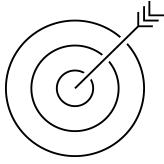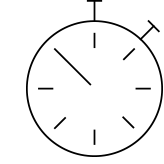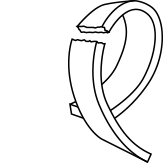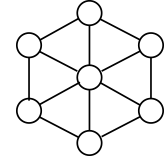Sanmac® is a family of machinability-improved stainless steels, available as bar and hollow bar.
There are different ways to measure productivity and determine cost savings, depending on whether you are close to the machining process, or responsible for purchasing the material.
We have therefore chosen to show six different perspectives, which all highlight the benefits of using Sanmac® materials.
1. Economy
The aim for any component manufacturer is to maximize the value added time, which will earn profit for operations performed. However, every machine tool should have planned maintenance for set up times and periodic maintenance.
Read more about Sanmac economy
2. Productivity 
Five aspects define the productivity in your machines:
- High cutting data
- Tool-life
- Energy consumption
- Chip breaking
- Surface finish
The total productivity potential for a machining process is all about the interaction between material, cutting tools and machine, where the right material can enable higher cutting data while at the same time prolonging tool life.
Read more about Sanmac productivity
3. Material consistency
- Minimize downtime
- Maximize utilization
- Enable standardization
- Reduce component costs
A higher volume of desired quality products at a lower cost is therefore expected. But if the raw material used does not have the quality and consistency as the rest of the system, then the whole machining operation will fail to achieve the expected cost-effectiveness. Most often the raw material quality determines the ultimate efficiency of a machining operation.
Read more about Sanmac material consistency
4. Setup times 
Why is a short setup time so important?
- Higher machine utilization
- Quicker batch changes
- Less wastage of trial components
- Reusability of cutting data programs
For any producer of machined parts, minimizing the time spent between batches must always be kept to a minimum.
Read more about Sanmac setup times
5. Chip breaking 
How can we help you achieve better chip breaking?
Machining stainless and duplex stainless steels is a challenge due to the high strength of the material, and chip-breaking is closely related to the microstructure. In our hot working process, we ensure that the material has an even and optimized microstructure throughout the entire length of the bar.
Read more about chip breaking in austenitic and duplex stainless steels
6. Chemical composition 
Are there differences between materials, if they all fulfill the same UNS standard?
UNS and EN standards for chemical composition allow a wide tolerance, but at Alleima, we never aim for the lower end of these tolerances like many of our competitors. Instead, we design our chemical compositions for the sweet spot in the triangle of desirable properties: machinability, corrosion resistance and weldability. Once that target composition has been achieved, we land exactly in that spot every time we melt, within very tight tolerances.